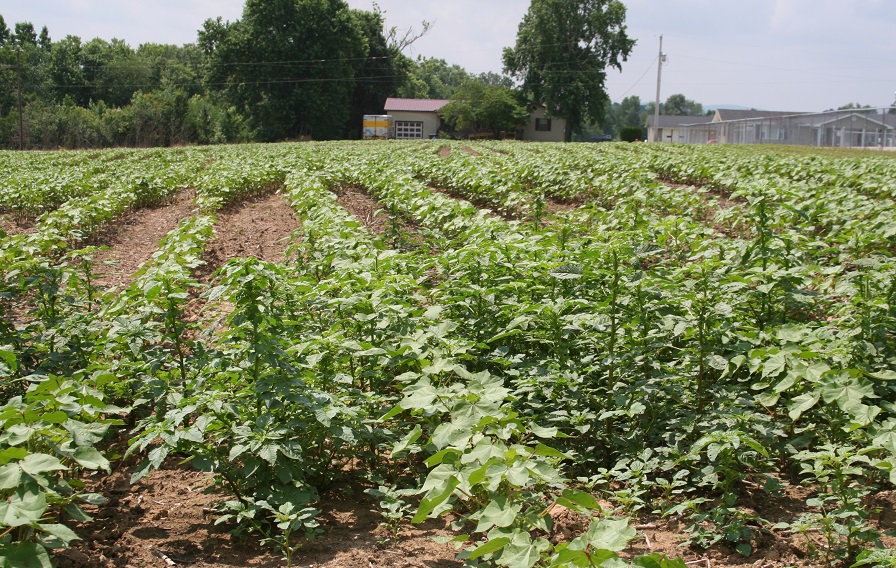2009 U.S. Cotton Outlook: A Report from the Mid-South Farm and Gin Show
We had a dilemma. We had too much nearby cotton but were being tantalized about a potential shortage. We were losing acreage around the world, and no more so than in the United States,” said Allenberg Cotton Company’s CEO Joe Nicosia. “Along those same lines, we had the situation with ethanol — food for fuel. Food for fuel was converting acres to anything that could be used, mainly corn.”
Nicosia’s remarks came at the Ag Update sessions at the U.S. Mid-South Farm & Gin Show in Memphis, Tennessee in late February.
The theme for this year, he said, was avoiding repeated mistakes.
The hope that cotton stocks would fall in 2007/08 remains the same in 2008/09. “Once again, our expectations of a severe draw down in cotton stocks have faded,” Nicosia said. “We’re left with the reality of having larger stocks once again.”
At the beginning of this marketing year, the U.S. Department of Agriculture (USDA) estimated that U.S. carryover would be cut in half from around 9 million bales to 4.5 million. But USDA kept raising the number until it reached 7.7 million bales.
“We will have the largest surplus of cotton in 40 years,” said Nicosia. “We began the last two years with export forecasts that again proved to be too optimistic. As we left here last year, prices were fairly high, and yet stocks continued to build. We talked about the problems around the world with India taking much of our market share, but prices continued to go up and reached $1.08 per pound.”
The saying goes, a bull market is always followed by a bigger bear market. And that is exactly what happened in cotton. A year ago, speculators with long forward-contracted positions owned more cotton on paper than actually existed. As they continued to buy, an artificial spike was created. Within two weeks, speculators with profits began to liquidate, sending the cotton market into a free fall. By November, price for the December ‘09 contract on the New York Board of Trade hit a life-of-contract low of 45.25 cents per pound.
In Commodities Futures Trading Commission (CFTC) hearings that followed the unusual spike and collapse, the CFTC said it didn’t see any problems that took place during this time because speculators with over-bought positions began to sell. “I found that to be a very interesting observation from someone not involved in the market because at some point in time, when you finally win the game, you get out,” Nicosia said. “Of course the speculators sold when it went to $1.08 because they were the ones who owned everything.”
At the same time speculators were liquidating, index funds that had been pouring money into all commodities began taking it out. Following the crash in cotton prices came the recession, and the repercussions for cotton were immense.
“A new class of investors has emerged, pouring money into index funds as a hedge against inflation,” said Nicosia. “They decided that owning futures and not the commodity — a very, very big distinction — was the way to go.”
Nicosia said no one could have envisioned the economic conditions of today. “We were talking about the conversion to ethanol, commodities prices were skyrocketing and crude oil was moving toward $150 (USD) per barrel,” he explained. “People were worried about running out of about everything.
“Cotton had hopeful prospects, then all of a sudden demand started to fade and it looked like another surplus was going to be inevitable.”
An Olympic Moment
The most devastating factor in the drop in cotton prices has been the monumental collapse of China’s mill use. Between 2000/01 and 2007/08, China’s mill use more than doubled. In this marketing year, it will drop for the first time in 10 years.
“I don’t think it’s just a coincidence that the commodity collapse came at essentially the same time as the Olympics,” said Nicosia. “China had such a huge build up going into the Olympics — for buildings, for roads, for food, for infrastructure — all that climaxed leading up to the Olympics. When the Olympics were over, that was pretty much it.”
“The recession is the driver of cotton demand now. We’ve taken the food for fuel storm and have set it aside,” he continued. “Yet since the seizing up of the financial markets in October, the impact on cotton consumption has been very pronounced.”
Hope, Recovery, Expectations
Nicosia said that, as far as cotton use is concerned, recessions are usually followed by long, sustained recoveries. Demand usually returns to pre-recession highs.
For example, following the 1973 to 1975 recession, fiber demand rose 17% in 1976 and another 2% in 1977. Following the 1981/82 recession, demand rose 21% in 1983 and another 7% in 1984. “In every year after a recession, with the exception of 1980, we had at least a 10% increase in consumption,” said Nicosia.
If there is a positive to the recession and lower acreage, it is that mills stocks are at extremely low levels and the supply pipeline is virtually empty. If demand returns to pre-recession levels, there will be at least a 6 million bale shortfall, according to Nicosia.
Another important element of last year is the resurgence of government involvement in controlling cotton crops. China has begun purchases of 12.5 million bales for the state reserve, added to an old crop reserve of 5 million. “That means they are buying just under 150,000 bales a day for their reserve,” Nicosia said. “That means they are buying just under 1 million bales every week for their reserve. That’s a phenomenal amount of cotton.”
India has been U.S. cotton’s biggest competitor, but India finds itself in a dilemma with national elections and the collapse in world cotton prices. The Indian government is facing the problem of propping up the millions of people involved in the cotton industry, so the government is purchasing cotton directly from farmers through the Cotton Corporation of India, the governmental marketing organization, and the Maharashtra Cotton Federation, a grower cooperative marketing organization, at a high minimum support price.
“Because we had prices pretty high during the year, they set their price high,” said Nicosia. “About the time they did it, world prices collapsed. Now India finds itself in the situation where they either have to go back and lower their price to the farmer — the last thing they want to do with elections coming up — or they have to suck it up and start buying. And that’s what they did.”
India, he predicted, will have to buy between 10 and 12 million bales at prices substantially above the market.
The Over-Supply Solution
In the U.S., the entire 2008 crop has either gone into the loan or sold with the grower collecting loan deficiency payments. But for the long-term health of the industry, only acreage reductions and/or increases in demand will solve the over-supply problems. Some planting intentions reports have pegged U.S. Upland acreage at less than 8 million. Planting intentions from China are showing a 15% to 20% drop in acreage. And China is in an intense food versus fiber fight.
Obviously this crop year in the U.S. begins with enormous uncertainty. What will have to be answered as this year’s crop goes into the ground are two questions: What will the price of cotton have to be for it to increase acres over grains planting? Or how far will grain prices have to fall for cotton at loan value to be more profitable than grains?
“When pessimism is great in the spring and it takes planted acreage away around the world, prices do respond,” Nicosia said.
“If that 5.4 million U.S. carryover goes back to 8 million because the crop comes in at 16 million, or exports drop to 10 million, then here we go again,” he says. But while the demand for cotton seems weak right now, he believes recovery, when it comes, will be sharp. “But if the recession has contracted the demand so greatly and emptied the pipeline so quickly, a rebound will come equally as quick.”








